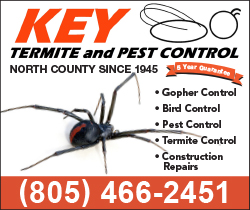Letter: Pallid Bat designated as official state bat of California
To the editor,
– On Oct. 8, 2023, and effective Jan. 1, 2024, Senate Bill (SB) 732 has been signed into law. SB 732 designates the Pallid Bat (Antrozous pallidus) as the official state bat of California. The bill was passed by both the California State Senate and State Assembly receiving virtually unanimous, bi-partisan support. Why was this bill significant and why is the Pallid Bat (and why are bats in general) so important?
First, the state has the legal responsibility of naming official state symbols, in particular those that represent the state’s cultural, historical, economic, and natural heritages. For example, we have a state animal (grizzly bear), dance (West Coast swing dancing), fabric (denim), and four official state nuts (the almond, the walnut, the pistachio, and the pecan.)
Second, establishing a state bat honors California’s extremely diverse natural history but equally honors its prized economic base, agriculture. In the United States, bats annually contribute between $20-billion and $40-billion in pest control benefits to ranchers and farmers alike. In California alone, estimated annual benefits to agriculture range from $1-billion to $2-billion. Some of our smaller bats are also major predators on the mosquitos that are the vectors for West Nile and St. Louis encephalitis viruses.
Yes, bats and rabies are often closely associated – and yes, some bats carry and can transmit a rabies virus – however, human contact with bats can virtually always be avoided and in the rare case of contact with a rabid bat (typically when ill-advisedly handled), with modern tissue culture vaccines, coupled with the appropriate use of immune globulin, treatment is essentially 100% effective.
Third, among California’s 25+ bat species, the Pallid Bat represents the ideal species to be so-named because a) Pallid Bats are distributed statewide and in diverse habitats, including along our coast, in our agricultural valleys, in mountain foothills, and in our several deserts, b) the Pallid Bat is also a strong indicator species of the health of the state’s oak woodlands, grasslands, and savannas; the Pallid Bat thrives where these native habitats remain intact, c) California’s Pallid Bat populations thrive where rangeland and agriculture are widespread, and d) Pallid Bats consume a wide variety of pest insects and other arthropods (locusts, crickets, potato bugs, scorpions, etc.) throughout California’s diverse habitats, promoting a healthier landscape across the state.
The Central Coast is home to the most robust population of Pallid Bats in the state, a fact that pays a natural history complement to our diverse agricultures, extensive oak woodlands and adjacent grasslands, limited population centers, and respect for our open spaces.
Understanding that many readers may have misgivings about bats, the only true flying mammals, the resounding support SB 732 received from California lawmakers (with agricultural value the lynchpin for the support it received) will hopefully change the way some view these splendid, remarkably intelligent, highly beneficial mammals. To find out more about our local bats (19 species of which occur on the Central Coast) bats or to participate in bat-related community science projects, visit https://centralcoastbatsurvey.org.
William E Haas, Director
Central Coast Bat Survey, Paso Robles
Editor’s note: Opinion pieces and letters to the editor are the personal opinions of the authors and do not necessarily reflect the views of the Paso Robles Daily News or its staff. We welcome letters from local residents regarding relevant local topics. To submit one, click here.






















